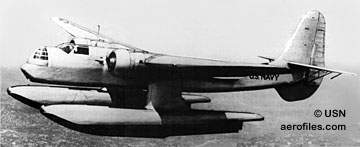After the South American War, the FAB (Força Aérea Brasileira) was in very poor shape, having gone from a high of 709 combat aircraft prior to the war in 1934, to around 50 serviceable aircraft, most of which were obsolete biplanes. Several promising aircraft designs had been halted by the war, and once production resumed in 1937 were nearly obsolete. The EMBRAER EMB-38 is perhaps a prime example of this, which while it was a decent design in 1934, the rapid pace of development in the late 1930's meant it was near obsolete when it first began entering service in 1937.

EMBRAER EMB-38
MODEL EMBRAER EMB-36
WEIGHTS
Take-off weight 3050 kg 6724 lb
Empty weight 2075 kg 4575 lb
DIMENSIONS
Wingspan 10.97 m 35 ft 12 in
Length 8.18 m 26 ft 10 in
Height 2.97 m 9 ft 9 in
Wing area 20.44 m2 220.01 sq ft
PERFORMANCE
Max. speed 499 km/h 310 mph
Ceiling 9570 m 31400 ft
Range 1529 km 950 miles
ARMAMENT 2 x 12.7mm + 2 x 7.62mm machine guns, 160kg of bombs
The EMBRAER EMB-38 would begin equipping the squadrons of the II FAe (SAE-Paraguay) in 1937. The EMBRAER EMB-38 would eventually equip 12 squadrons totalling 192 aircraft, with production ending in quarter one of 1940.

Sienar V-25
Four-seat patrol torpedo bomber seaplane
General characteristics
Crew: four
Length: 55 ft 11 in (17.05 m)
Wingspan: 79 ft 4 in (24.19 m)
Height: 24 ft 1 in (7.34 m)
Wing area: 828 ft² (77.0 m²)
Empty weight: 11,992 lb (5,451 kg)
Loaded weight: 17,983 lb (8,174 kg)
Max takeoff weight: 21,414 lb (9,734 kg)
Powerplant: 2× Pratt & Whitney XR-183-60 Wasp air-cooled radials, 800 hp (597 kW) each
Performance
Maximum speed: 158 knots (182 mph, 293 km/h)
Range: 2,278 nmi [2] (2,620 mi, 4,218 km)
Service ceiling: 16,000 ft (4,876 m)
Climb to 5,000 ft (1,520 m): 5.3 min
Armament
Guns: 1× .3 in machine gun in nose turret and dorsal position and 1× .5 in machine gun in ventral position
Bombs: 1×torpedo or 1,000 lb (450 kg) bomb
Production on this aircraft began in 1937, as a logn range torpedo bomber for use in the Atlantic. Eventually equipped 2 squadrons in FAe IV (coastal defence), for a total of 32 aircraft produced, production ending in 1940.

Sienar V-31
MODEL Sienar V-31
CREW 1
ENGINE 1 x Wright R-1820-40 Cyclone, 895kW
WEIGHTS
Take-off weight 3247 kg 7158 lb
Empty weight 2146 kg 4731 lb
DIMENSIONS
Wingspan 10.67 m 35 ft 0 in
Length 8.03 m 26 ft 4 in
Height 3.68 m 12 ft 1 in
Wing area 19.41 m2 208.93 sq ft
PERFORMANCE
Max. speed 517 km/h 321 mph
Cruise speed 415 km/h 258 mph
Ceiling 10120 m 33200 ft
Range 1550 km 963 miles
ARMAMENT 4 x 12.7mm machine-guns, 2 x 45-kg bombs
The story of the Sienar V-31 is an interesting one, as it is a naval fighter for a country that does not yet have an aircraft carrier afloat. Design of the aircraft began before the SA War began, and although the design work was completed before the end of the war, the Sienar V-31 didn't see combat due to production being delayed due to the war. Production commenced in early 1937, even though there still wasn't a Brazilian carrier for them to fly off of, they equipped 4 land based squadrons in FAe IV for a total of 64 aircraft produced. Production ended in 1940.

Sienar V-19
General characteristics
Crew: 3 (pilot, navigator, gunner)
Length: 27 ft 8 in (8.43 m)
Wingspan: 39 ft 0 in (11.89 m)
Height: 8 ft 7 in (2.64 m)
Wing area: 259 ft² (24.1 m²)
Gross weight: 3759 lb (3066 kg)
Powerplant: 1 × Wright XR-1820-22 Cyclone radial engine, 950 hp (709 kW)
Performance
Maximum speed: 254 mph (409 km/h)
Range: 1015 miles (1633 km)
Service ceiling: 28,300 ft (8600 m)
Armament
1 × rearward-firing, flexible 12.7mm machine gun
Up to 500 lb (230 kg) of bombs
Another aircraft designed prior to the SA War, its story is similar to that of the Sienar V-31, being designed for a carrier, but having no carrier to operate off of. Production began in 1937, with 2 squadrons in FAe IV for a total of 32 aircraft produced.
More to come.



Quoted
Originally posted by TheCanadianQuoted
Originally posted by TheCanadian